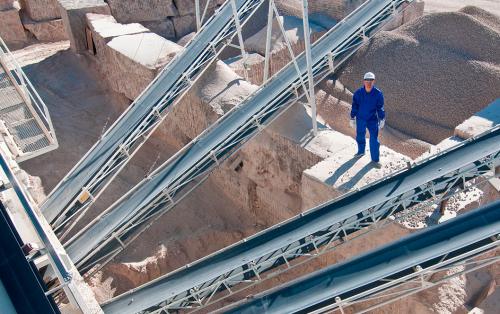Choose Practical Underground Vent Solutions

Ventilation is the control of air movement, its amount, and direction. In spite of the fact that it contributes nothing directly to the production phase of an operation, the lack of proper ventilation often will cause lower worker efficiency and reduced productivity, increased accident rates, and absenteeism.
Air is necessary not only for breathing purpose but also to disperse chemical and physical contaminants. Mine ventilation practice is heavily regulated, particularly in coal and gassy mines, and other statutes relate to air quantities needed to dilute diesel emissions, blasting fumes, radiation, dusts, battery emissions, and many other contaminants.
To maintain sufficient ventilation through a mining site, careful advance planning is necessary. Advance ventilation planning involves the consideration of two principal factors: the total volume flow rate of air needed by the mine, and its satisfactory and economic distribution, and the pressure needed by the mine fan(s). A well designed Underground Vent system should be effective, flexible, and affordable.
A well designed and properly implemented ventilation system will provide beneficial physiological and psychological side effects that improve employee safety, comfort, health, and morale. In planning a proper ventilation system, the quantity of air it will be required to circulate to meet all health and safety standards must be decided at the outset.
Once the quantity needed has been fixed, the right size of shafts, number of airways, and fans can be determined. As fresh air enters the system through the intake airshaft or other connections to the surface, it flows along intake airways to the working areas where the majority of pollutants are added to the air. These include dust and a combination of many other potential hazards, such as toxic or flammable gases, heat, humidity, and radiation. The contaminated air passes back through the system along return airways. In most cases, the concentration of contaminants is not allowed to exceed mandatory threshold limits imposed by law. The exhausted air eventually passes back to the surface via return airshaft, or through inclined or level drifts. Air always flows along the path of least resistance, but this might not be where it is needed for use. To direct the air where it is required, ventilation devices are necessary; the primary means of producing and controlling the airflow for the whole system are mine fans.
The objective of any ventilation system is twofold. First, the primary ventilation must course air by the main airways to the immediate working area out by the working faces, thus making fresh air available for face ventilation, and then return the contaminated air through return or exhaust airways to the surface.
Second, the face ventilation system must be intended to effectively use the available air in the immediate working area to sweep the working face, to capture and remove dust, and to dilute and carry away gas, if any, emitted during mining activities. Without a properly designed ventilation system, an efficient production cycle would not be conceivable.
Mine ventilation systems must not only provide for the health and safety of underground personnel but also operate in compliance with regulatory bodies.
So, ensure quality airflow with practical Underground Vent systems.
Advertise on APSense
This advertising space is available.
Post Your Ad Here
Post Your Ad Here
Comments